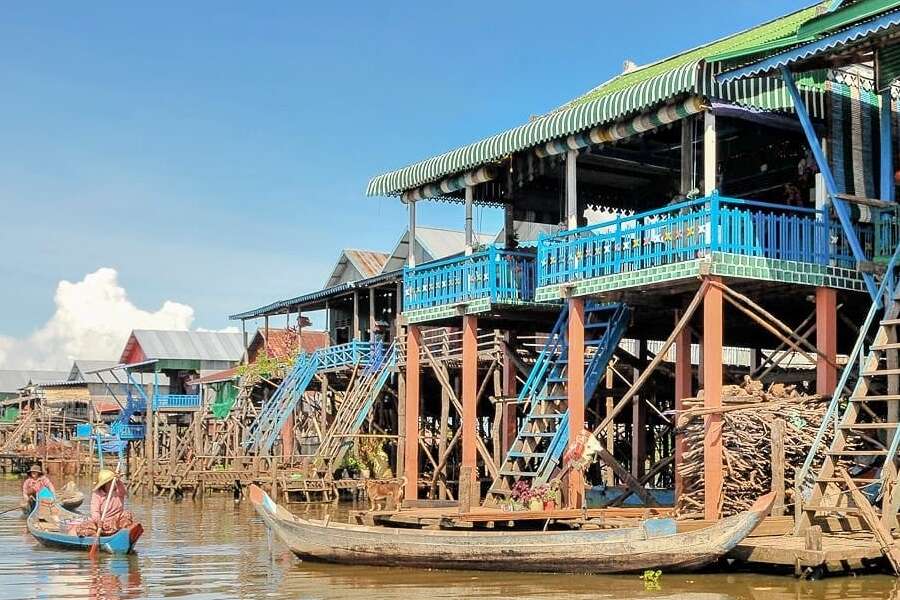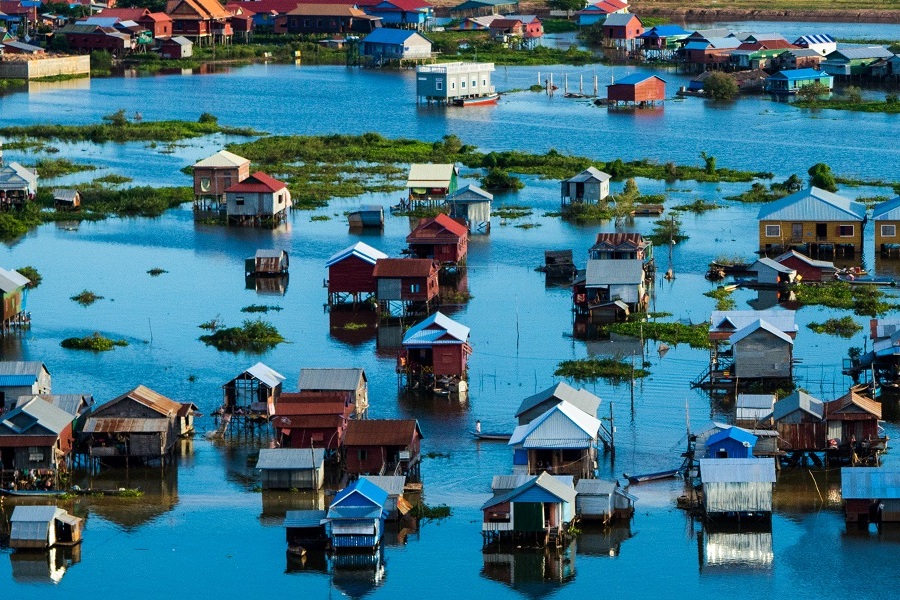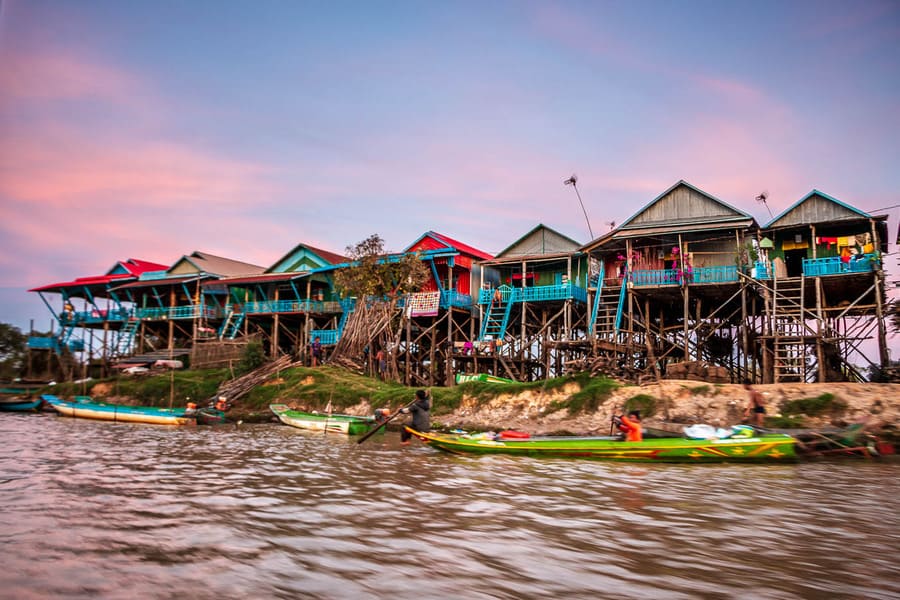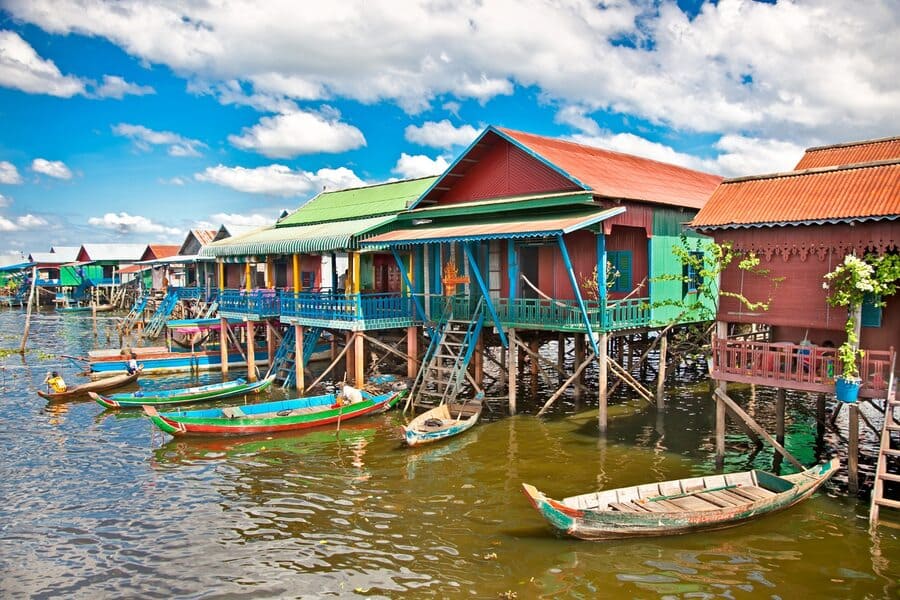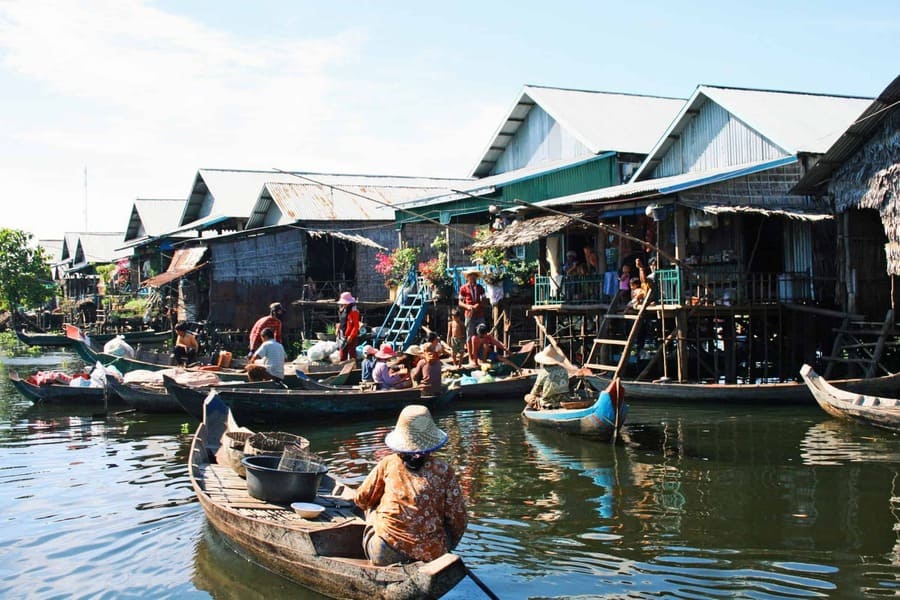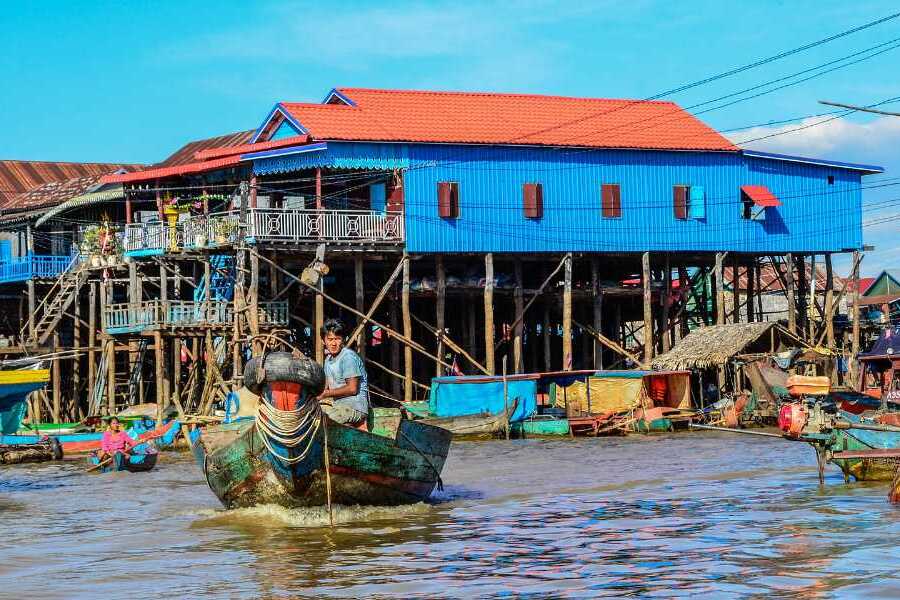Embarking on a cambodia tour unveils a tapestry of cultural wonders and natural marvels, none more captivating than the floating villages nestled within the country's labyrinthine waterways. Amidst the serene expanse of the Tonlé Sap Lake and the meandering Mekong River, these floating communities offer a glimpse into a lifestyle both ancient and adaptive.
Contents
Overview of Cambodia's floating villages
Cambodia's floating villages are a testament to the ingenuity and adaptability of its people in navigating the challenges of living in a dynamic and ever-changing environment. Situated primarily on the Tonlé Sap Lake, Southeast Asia's largest freshwater lake, and along the banks of the Mekong River, these villages are characterized by houses, schools, temples, and markets built on stilts or floating platforms.
The Tonlé Sap Lake, known as the "Great Lake" of Cambodia, is a critical lifeline for the country, providing sustenance, transportation, and livelihoods for millions of Cambodians. During the annual monsoon season, the lake swells in size, expanding up to fivefold its dry-season dimensions. This natural phenomenon not only floods the surrounding floodplains but also allows for the replenishment of fish stocks, which form the backbone of the local economy.
In these floating communities, residents have adapted their way of life to the rhythms of the water, relying on fishing, aquaculture, and agriculture for their sustenance. The villages buzz with activity as fishermen cast their nets, vendors ply their goods, and children paddle to school in colorful boats.
Unique lifestyle of Cambodia’s floating villages
The unique lifestyle of Cambodia's floating villages is a captivating blend of tradition, resilience, and adaptability, shaped by the rhythms of the water and the rich cultural heritage of its inhabitants.
Water-Based Living:
Unlike conventional land-based communities, the residents of floating villages have embraced a life intimately connected to the water. Homes, schools, temples, and markets are constructed on stilts or floating platforms, enabling them to rise and fall with the fluctuating water levels of the Tonlé Sap Lake and the Mekong River.
Symbiotic Relationship with Nature:
The inhabitants of floating villages have forged a symbiotic relationship with the natural environment, relying on fishing, aquaculture, and agriculture for their livelihoods. Fish, in particular, are a vital source of sustenance and income, with families often engaging in traditional fishing techniques passed down through generations.
Community Spirit:
Strong bonds of community and mutual support characterize life in floating villages. Residents work together to address common challenges, such as seasonal flooding, and celebrate shared traditions and festivals. Social ties are further strengthened by communal activities, including religious ceremonies, village meetings, and collective fishing expeditions.
Cultural Heritage:
Cambodia's floating villages are repositories of ancient customs, beliefs, and practices that have been preserved over centuries. Buddhism plays a central role in village life, with floating temples and pagodas serving as spiritual centers for prayer and meditation. Traditional music, dance, and storytelling are also integral parts of the cultural fabric, passed down from one generation to the next.
Adaptability and Resilience:
Despite facing environmental pressures, such as habitat loss, water pollution, and climate change, the residents of floating villages demonstrate remarkable adaptability and resilience. They have developed innovative solutions to mitigate the impact of these challenges, including the use of floating gardens for agriculture and the implementation of community-based conservation initiatives.
Tourism and Economic Opportunities:
The influx of tourists seeking an authentic cultural experience has presented new economic opportunities for floating village communities. Residents may engage in ecotourism ventures, offering boat tours, homestays, and handicrafts to visitors eager to learn about their way of life. However, the rise of tourism also brings challenges, such as maintaining cultural authenticity and managing environmental impact.
Activities for visitors in Cambodia’s floating villages
Visitors to Cambodia's floating villages can engage in a variety of activities that offer unique insights into the local culture, lifestyle, and environment. Here are some activities to consider:
Boat Tours: Take a guided boat tour through the floating villages to explore their intricate waterways, stilted houses, floating markets, and vibrant community life. Local boat operators can provide fascinating commentary on the history, traditions, and daily activities of the residents.
Homestays: Experience authentic Cambodian hospitality by staying with a local family in a floating village. Homestay programs offer visitors the opportunity to immerse themselves in the daily routines, traditions, and cuisine of the community, while also forging meaningful connections with their hosts.
Cultural Experiences: Participate in cultural activities and workshops organized by the residents, such as traditional dance performances, handicraft demonstrations, and cooking classes. These hands-on experiences provide valuable insights into the rich cultural heritage of floating village communities.
Visits to Floating Markets: Explore the bustling floating markets where villagers buy and sell fresh produce, fish, handicrafts, and other goods from boats and floating platforms. Witness the vibrant colors, lively chatter, and dynamic atmosphere of these unique marketplaces.
Fishing Experiences: Join local fishermen on their traditional fishing expeditions and learn about the techniques and tools they use to catch fish in the lake. You can also try your hand at fishing yourself and experience the thrill of reeling in a catch.
Community Engagement: Engage with the residents of floating villages through cultural exchange activities, volunteer opportunities, and community development projects. By interacting with locals, you can gain a deeper understanding of their way of life and contribute to their well-being in meaningful ways.
Preserving and Respecting the unique lifestyle of Cambodia's floating villages
Preserving and respecting the unique lifestyle of Cambodia's floating villages is essential to safeguarding the cultural heritage, environmental sustainability, and socio-economic well-being of these communities. Here are some strategies to achieve this goal:
Cultural Preservation:
It is crucial to support initiatives that promote the preservation of traditional customs, rituals, and practices within floating villages. This can be accomplished through community-led efforts to document oral histories, revive traditional arts and crafts, and teach younger generations about their cultural heritage.
Empowerment and Participation:
Involve residents of floating villages in decision-making processes that affect their lives and livelihoods. Empower local community leaders and organizations to voice their concerns, advocate for their rights, and contribute to the development of sustainable policies and programs.
Education and Awareness:
Promote education and awareness initiatives that highlight the importance of preserving the unique lifestyle of floating villages. This can include educational programs in schools, community workshops, and informational campaigns aimed at tourists and the general public.
Sustainable Tourism Practices:
Encourage responsible tourism practices that prioritize cultural sensitivity, environmental conservation, and equitable economic benefits for floating village communities. This may involve implementing guidelines for tour operators, promoting authentic cultural experiences, and supporting community-based tourism initiatives.
Environmental Conservation:
Support efforts to protect the natural environment surrounding floating villages, including the Tonlé Sap Lake and the Mekong River. This can include initiatives to reduce pollution, conserve biodiversity, and mitigate the impacts of climate change through sustainable resource management practices.
Infrastructure Development:
Invest in essential infrastructure and services that improve the quality of life for residents of floating villages, such as access to clean water, sanitation facilities, healthcare, and education. Infrastructure projects should be implemented in consultation with the local community and designed to minimize environmental impact.
Economic Diversification:
Promote economic diversification and alternative livelihood opportunities for residents of floating villages to reduce their dependence on vulnerable natural resources, such as fish stocks. This may involve supporting initiatives for sustainable agriculture, eco-friendly aquaculture, small-scale enterprises, and vocational training programs.
Partnerships and Collaboration:
Foster partnerships and collaboration between government agencies, non-governmental organizations, academia, and the private sector to address the complex challenges facing floating village communities. By working together, stakeholders can leverage their expertise, resources, and networks to develop holistic solutions that respect the unique lifestyle of Cambodia's floating villages.

